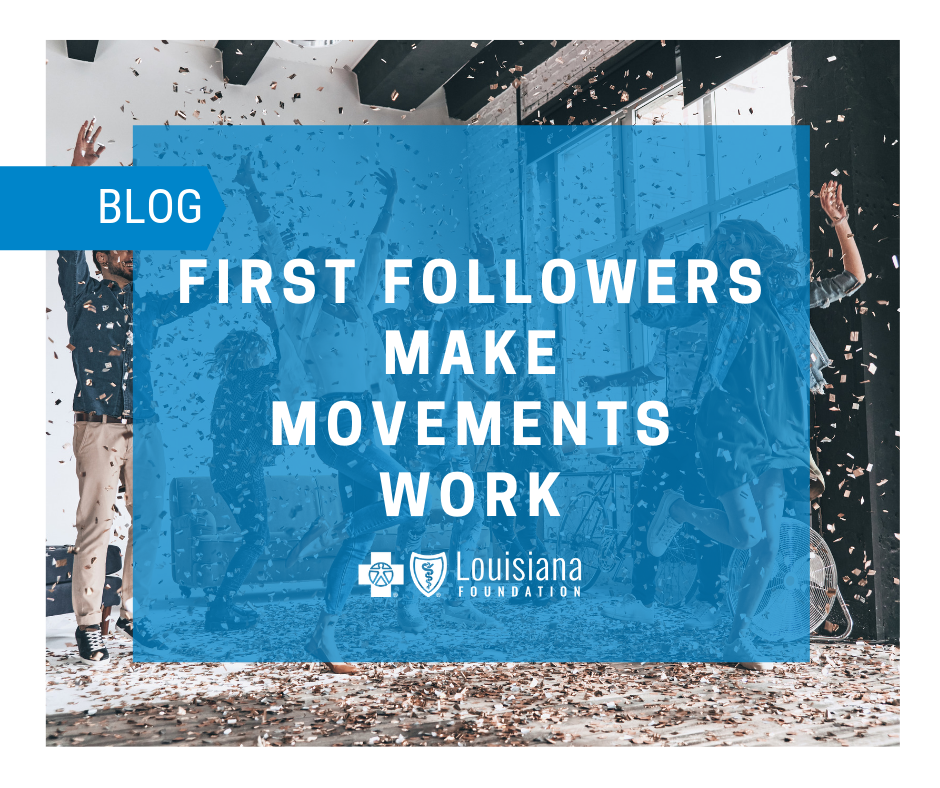The key takeaway (using the speaker’s terms) is that the first follower to join in is what transforms a lone nut into a leader. It’s the first follower, not the leader, who gets the ball rolling and catalyzes a movement.
Our culture prioritizes leadership, fueled by a billion dollar industry of coaching, books and seminars. Most of it is focused on being out in front, whereas being behind is bad. I’m sure we’ve seen some version of this meme:

In this cartoon, the boss is bad. The boss sits and watches and does nothing while the leader valiantly pulls at the head of the team. “Don’t be a boss in the back!” it says. “Be a leader out in front!”Memes miss the nuance of real life (and I know I’m being a little obtuse), but in this cartoon, isn’t it interesting that the leader pictured here is so absorbed in being out in front that he or she is not even looking back at the team? And might not notice that the folks behind them are gone until the weight gets too heavy to pull alone?
Regardless, the real hero in the image is this blue person:

This “first follower” is the one who saw the value of the work and knew that it was clearly too large for the leader out front to get it done alone. They jumped in bravely, lent their credibility to the leader out front and invited others to join in.One of the most important lessons we’ve learned from fielding dozens and dozens of grants over the last few years is that a project’s success largely depends on its leadership. The most effective organizations and efforts have leaders who actually spend most of their time being a “first follower,” throwing their weight behind others and inviting support.
Sure, there are times when these flexible leaders are operating from out in front – but they understand that stepping into that role is about pioneering and sparing others the risk that comes along with it. And they understand the unsurpassable value of the first follower – the person who gives you the ability to stop watching your back because you know someone has it.
The first follower (or what Karen and Henry Kimsey-House, authors of Five Ways to Lead, would call “The Leader Behind”):
- Serves from a place of deep generosity, without worrying what will come back to them
- Anticipates the needs of those around them
- Acknowledges others out loud, valuing and celebrating their strengths
- Lends their support and credibility even when others are too afraid
- Listens deeply and asks thoughtful questions to provoke creative problem-solving
In coalitions, the principals of being a first follower apply at the organizational level, too. Often, the culture (and, sometimes, even funding models) value and most highly reward the organizations who are biggest, most visible and who identify themselves as leaders in the field. Norms devalue and disincentivize cooperative models where one organization steps into a support role.
Louisiana will make the most progress through tackling big challenges through coalitions of service, broad cooperation and shared vision. That’s why our Foundation has and continues to invest in the collective impact model. But the model depends on first followers, people and organizations who throw their weight without worrying whether they will be the most visible or credited as the leader.
Today, I challenge us all to think about the people who enable us to be the leaders out front, who always has our backs. Maybe today is a good day to let them know how much we appreciate them. It’s also a good time to think about the lone nuts who need someone to lift them up. Reach out, check on them. Ask what they need. Be brave enough to jump in and dance with them.
– Michael Tipton
President, Blue Cross and Blue Shield of Louisiana Foundation
Head of Community Relations
michael.tipton@bcbsla.com
Subscribe to our mailing list

